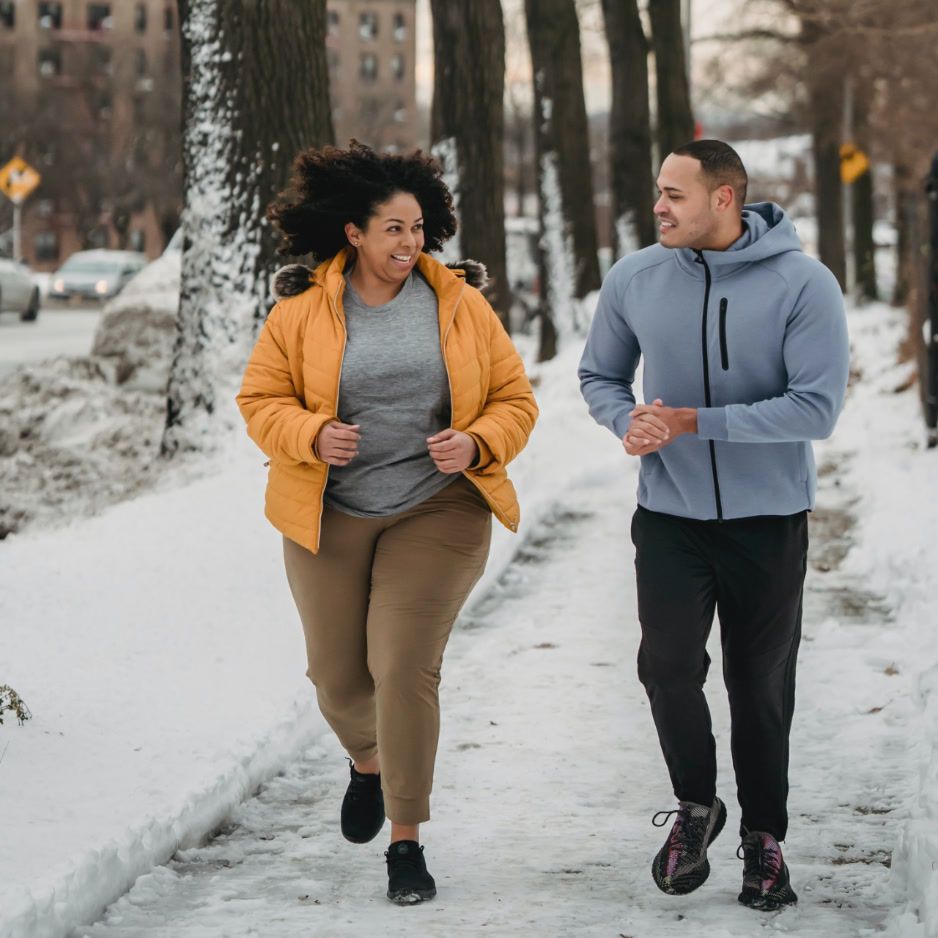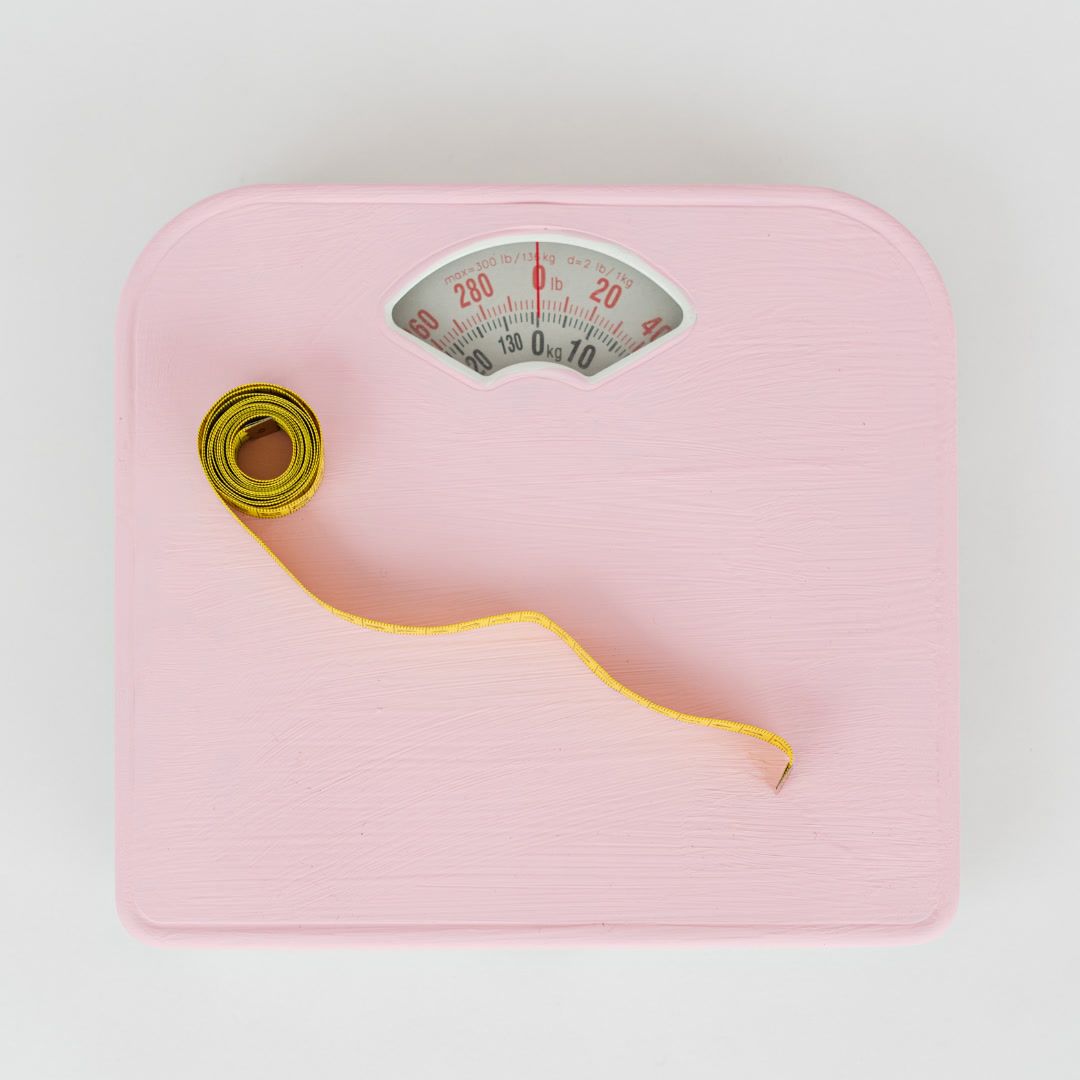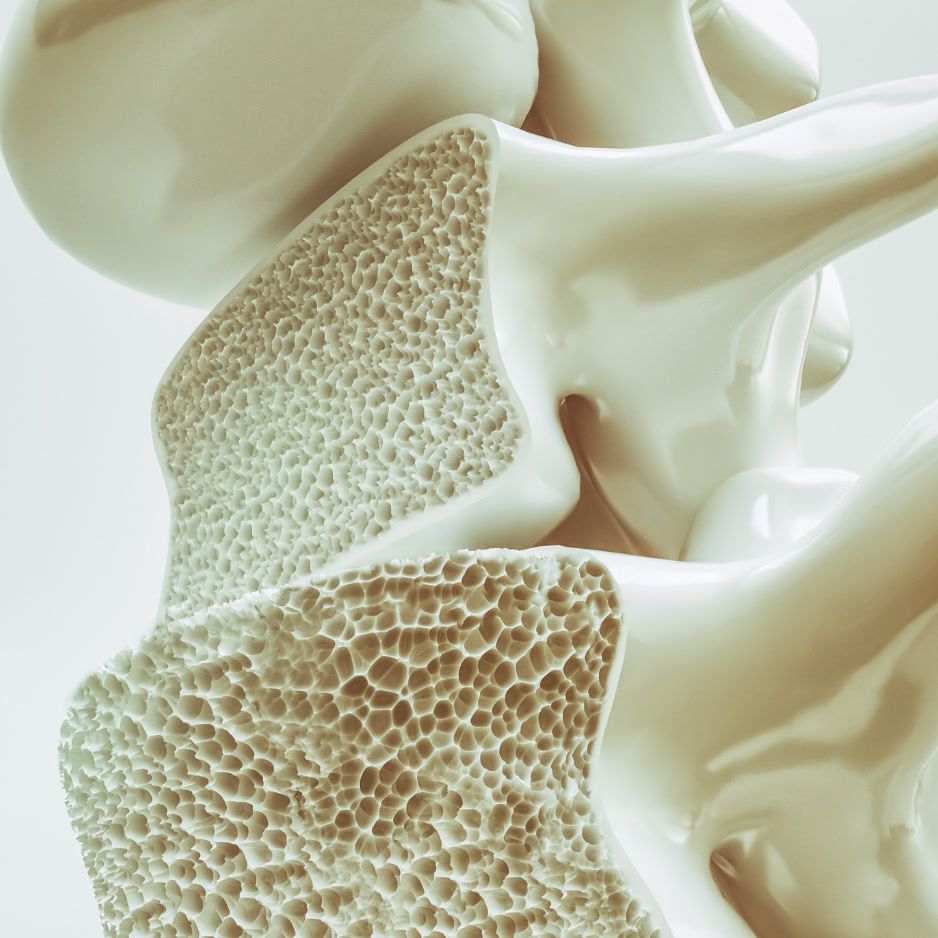Good Treadmill Incline for Weight Loss
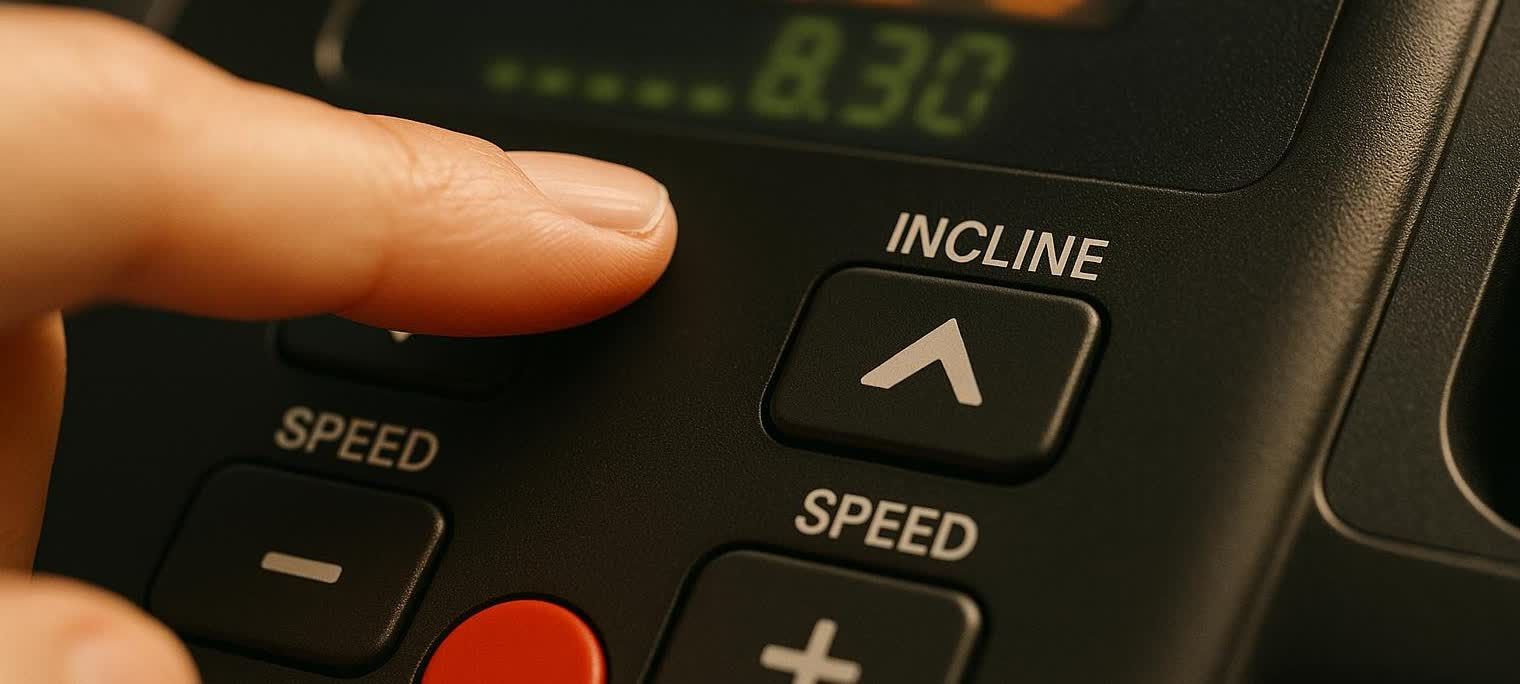
What’s a Good Treadmill Incline for Weight Loss?
Your ideal incline depends on your current fitness level and joint health—but everyone has a sweet-spot range that maximizes calorie burn while staying safe.
Walking is already one of the most underrated fat-loss tools. Add incline and you amplify calorie burn, muscle activation, and cardiovascular challenge—all without the joint pounding of running. This guide covers what makes a good incline to walk on a treadmill for weight loss, how to progress safely, and how to turn those console numbers into sustainable results.
Quick-Glance Answer
| Training Level | Good Incline Range |
|---|---|
| Beginner & joint-sensitive | 1 – 4 % |
| Intermediate | 5 – 9 % |
| Advanced fat-loss & HIIT | 10 – 15 % |
Hold this incline for 20–30 minutes with good form. Increase the grade only when the effort feels easier than a 6 out of 10 on the RPE scale (a 0–10 measure of effort, from rest to maximum exertion).
Why Incline Changes Everything
- Higher Calorie Burn Without Running
Metabolic cost increases ≈52 % at a 5 % incline and 113 % at a 10 % incline compared with flat walking (as shown in a study from the Journal of Biomechanics). - Glute & Hamstring Engagement
A steeper deck forces hip extension, lighting up your posterior chain while putting less impact on the knees than running. - Cardio and Strength in One
Heart-rate zones climb into moderate-to-vigorous territory at lower speeds, giving you “runner” benefits while still walking (Healthline). - Real-World Transfer
Hills, hiking, and stairs become easier—extra motivation to stay active off the treadmill.
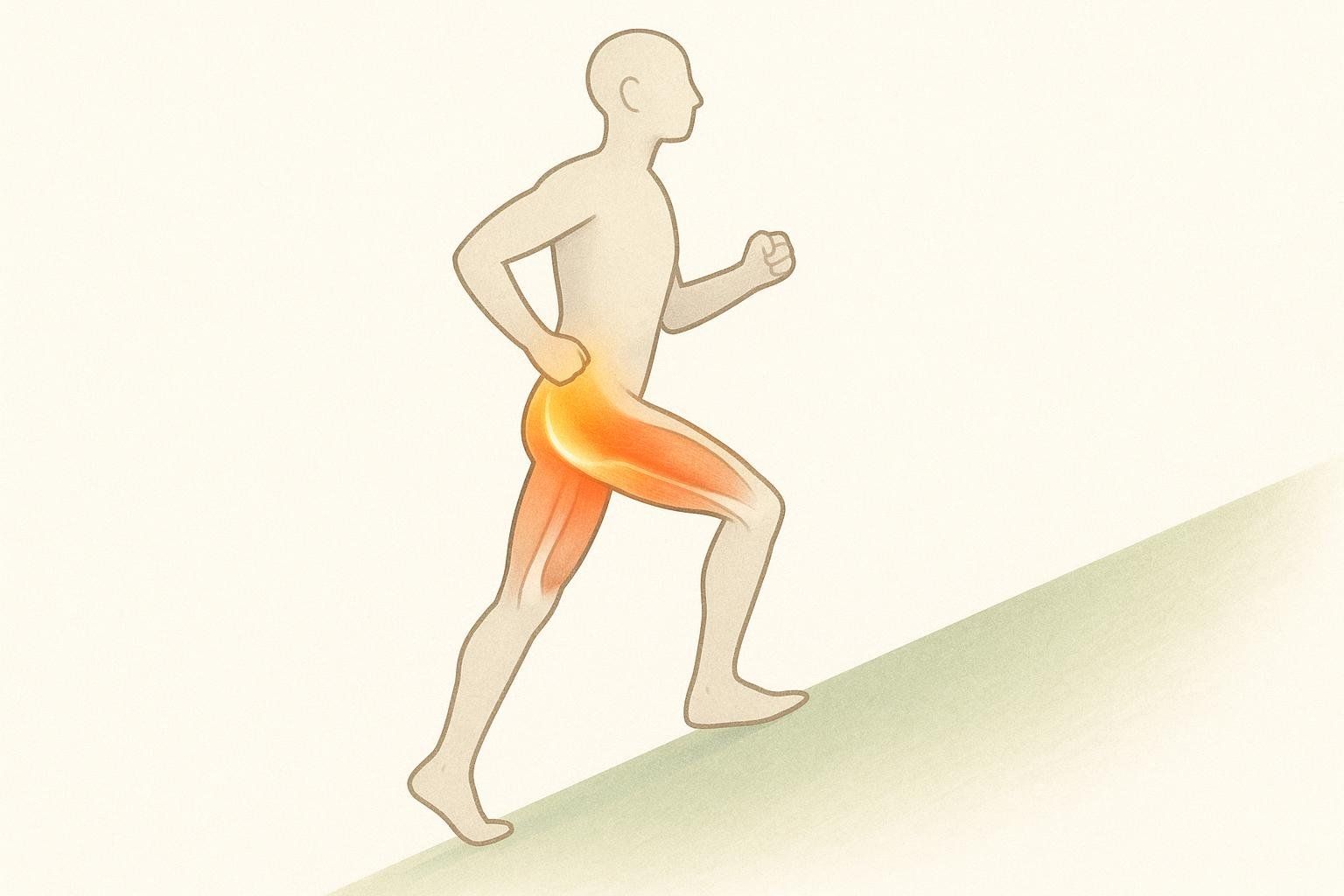
How to Pick Your Starting Incline
1. Assess Your Baseline
- Flat Walk Test: Walk 5 minutes at 0 % incline, 3 mph. RPE ≤ 3? You’re ready to add grade.
- Joint Check-in: Any sharp knee or low-back pain on flats means start at 1 % only.
2. Follow the 30-Minute Rule
A good weight-loss incline is one you can hold for 30 minutes while keeping form (no death-grip on the rails!). If 30 minutes isn’t realistic yet, use the lower end of your range and build up time first.
3. Match Grade to Goal
| Goal | Effective Incline |
|---|---|
| Calorie burn with minimum joint load | 2 – 5 % |
| Glute/hamstring sculpt | 6 – 9 % |
| Maximum fat-loss efficiency (e.g., popular 12-3-30 walk) | 10 – 12 % |
Sample Progression Plans
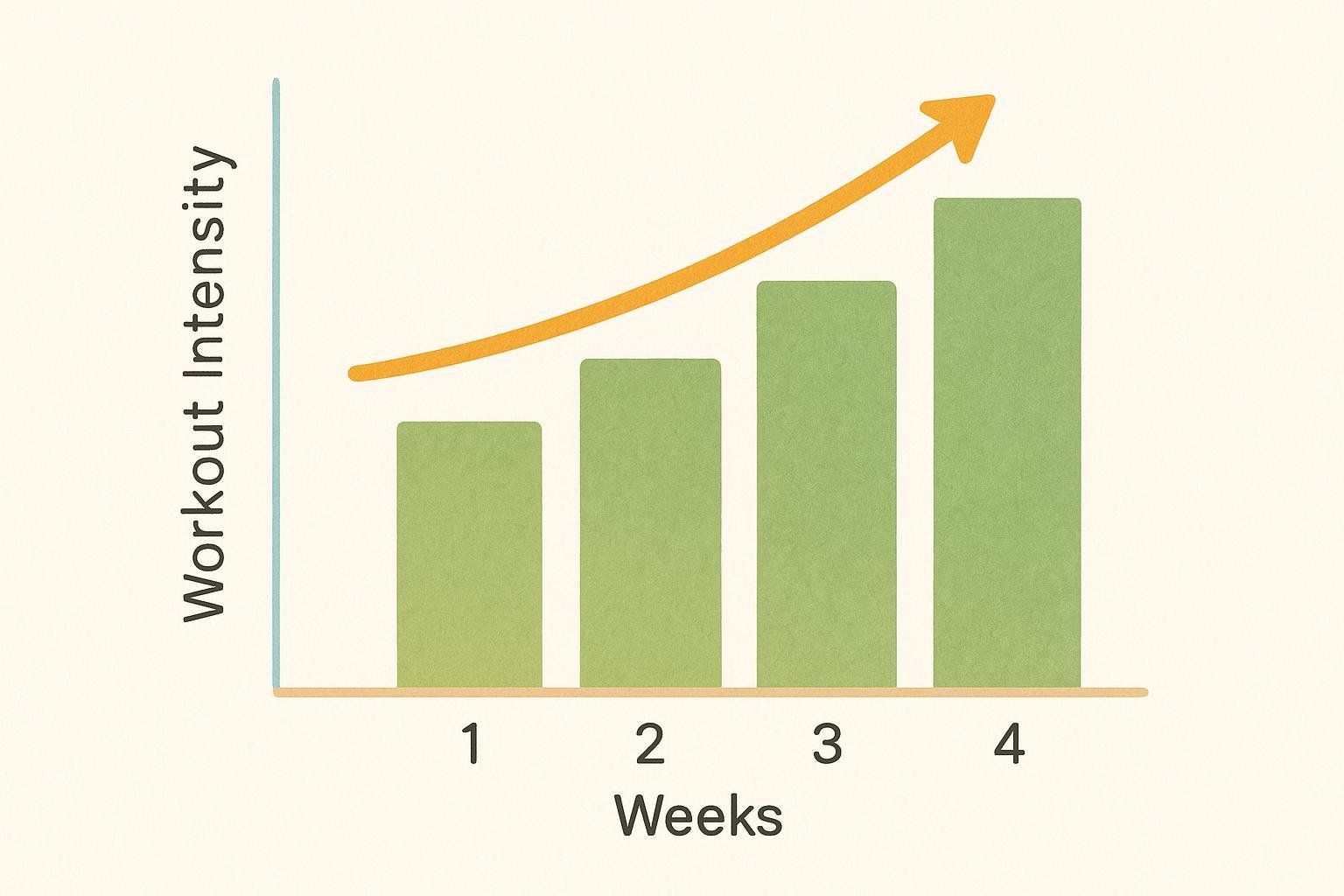
A. Joint-Friendly Beginner (Weeks 1–4)
| Segment | Duration | Incline | Speed |
|---|---|---|---|
| Warm-up | 5 min | 0 % | 2.8 mph |
| Work | 20 min | 2 % | 3.0 mph |
| Cool-down | 5 min | 0 % | 2.5 mph |
Progression: Increase incline by 0.5 % per week or until RPE consistently hits 6.
B. Intermediate Fat-Loss Builder (Weeks 5–8)
| Segment | Duration | Incline | Speed |
|---|---|---|---|
| Warm-up | 5 min | 0 % | 3.0 mph |
| Block 1 | 10 min | 5 % | 3.2 mph |
| Block 2 | 10 min | 6 % | 3.0 mph |
| Block 3 | 5 min | 5 % | 3.2 mph |
| Cool-down | 5 min | 0 % | 2.8 mph |
Progression: When RPE ≤ 5, bump Block 2 by 1 %.
C. Advanced HIIT Incline Blast (2–3×/week)

| Interval | Incline | Speed | Time |
|---|---|---|---|
| Warm-up | 0 % | 3 mph | 5 min |
| Work | 12 % | 3 mph | 1 min |
| Recovery | 3 % | 2.8 mph | 2 min |
| Repeat | — | — | ×8 |
| Cool-down | 0 % | 3 mph | 5 min |
This mirrors the popular 12-3-30 workout but breaks it into manageable bursts.
Posture & Form Checklist
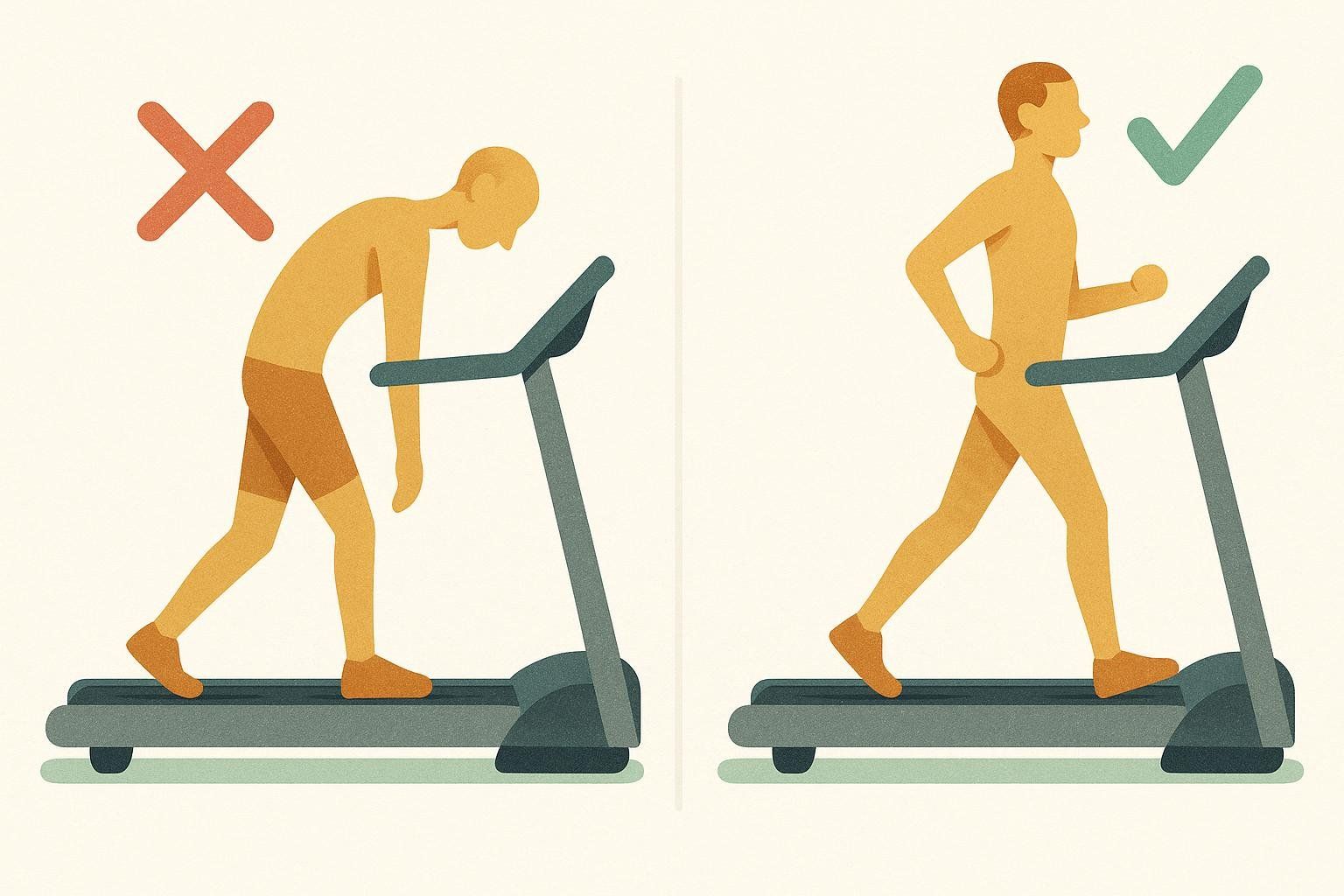
- Stand tall, ribs stacked over hips—no slouching into the console.
- Shorten your stride slightly; think quick steps up a hill.
- Light hand touch only if needed for balance. Holding on significantly reduces calorie burn and overall workout effectiveness.
- Eyes forward, chin level, to prevent neck strain.
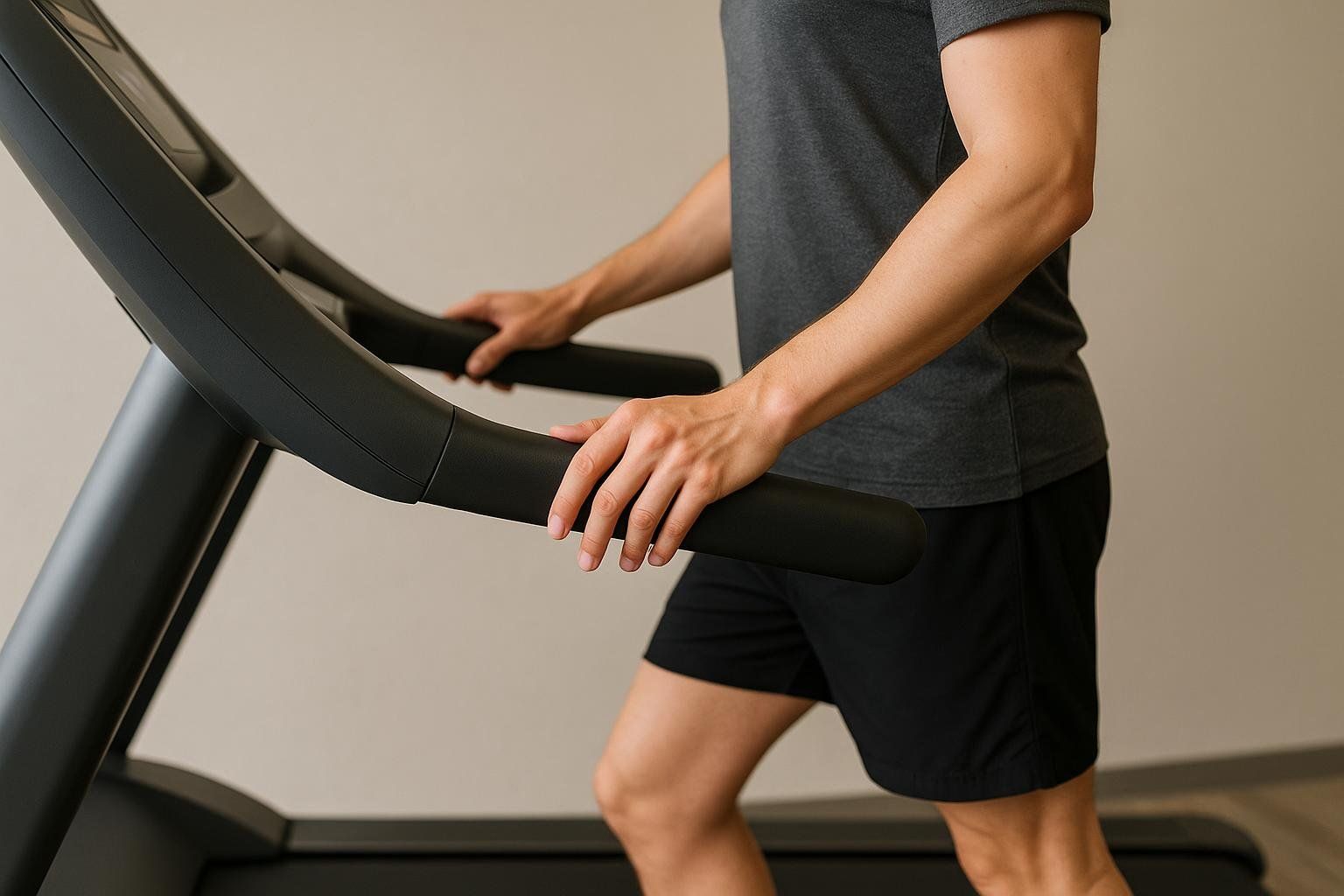
For knee concerns, add these exercises for strong, pain-free knees on non-walk days.
Calorie-Burn Cheat Sheet (150-lb / 68-kg Walker, 30-Min Session)

| Speed | Incline | Estimated Calories |
|---|---|---|
| 3.0 mph | 0 % | 135 |
| 3.0 mph | 5 % | 205 |
| 3.0 mph | 10 % | 290 |
| 3.5 mph | 5 % | 250 |
| 3.5 mph | 10 % | 330 |
Source: Estimates are based on standard metabolic equivalent (METs) formulas for a 150-lb individual.
Note: These figures are estimates. Your actual calorie burn depends on factors like age, sex, and body composition. A BodySpec DEXA scan provides your precise Resting Metabolic Rate (RMR) and body composition, key data points for creating more accurate calorie burn estimates.
Safety Tips & Red Flags
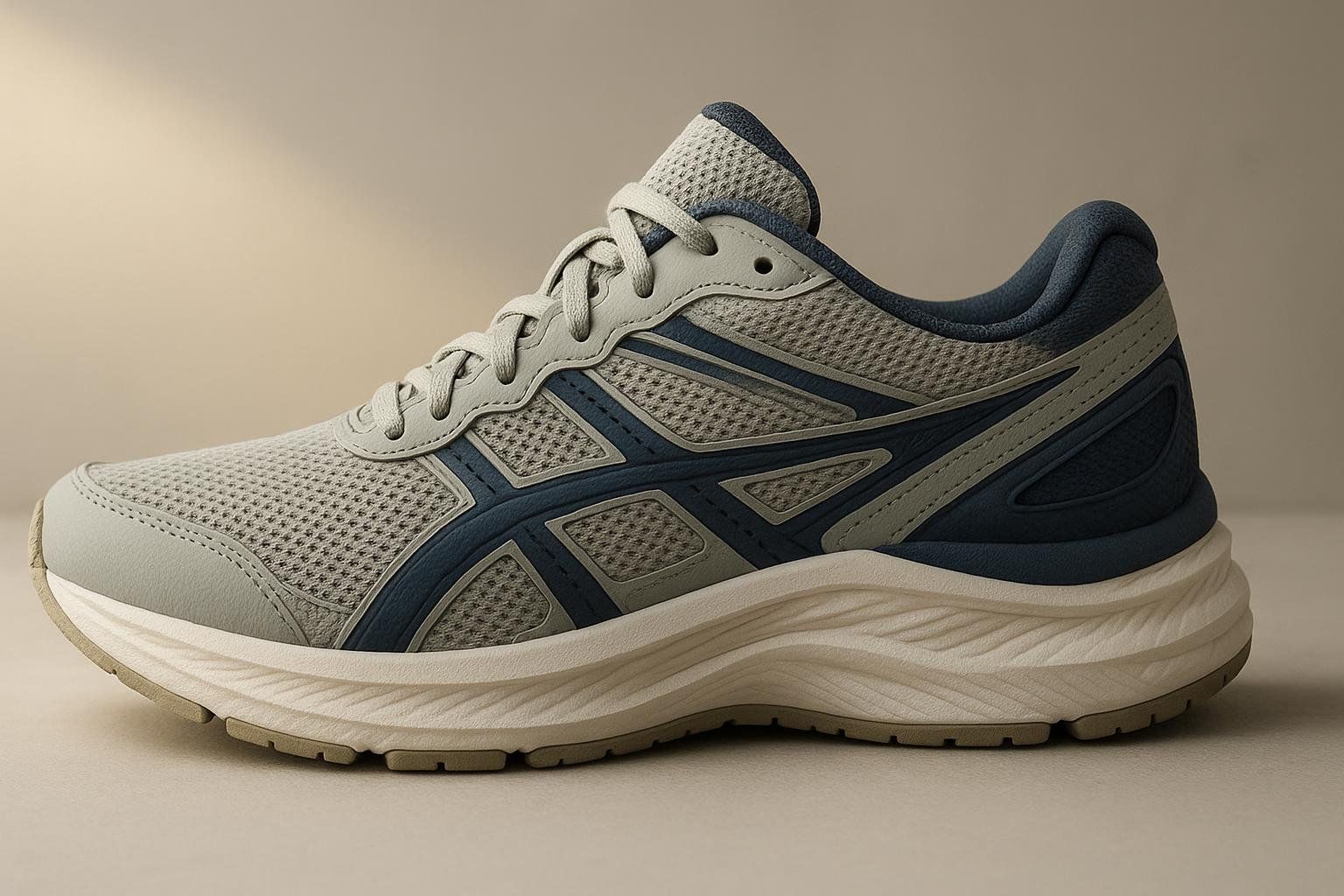
- Progress Slowly—jumping from 0 % to 12 % overnight invites Achilles and low-back flare-ups.
- Rotate Intensities—alternate incline days with flat or strength sessions to allow tissue recovery.
- Mind the Footwear—supportive shoes with a moderate heel-to-toe drop help maintain ankle dorsiflexion.
- Pain ≠ Gain—sharp joint pain? Drop incline immediately and reassess form or see a professional.
Tracking Real-World Results
Scale weight can be fickle. A DEXA body-composition scan tells you whether the calories you torch on the treadmill come from fat—not hard-earned muscle. Learn how scans work in our DEXA Scan Complete Guide.
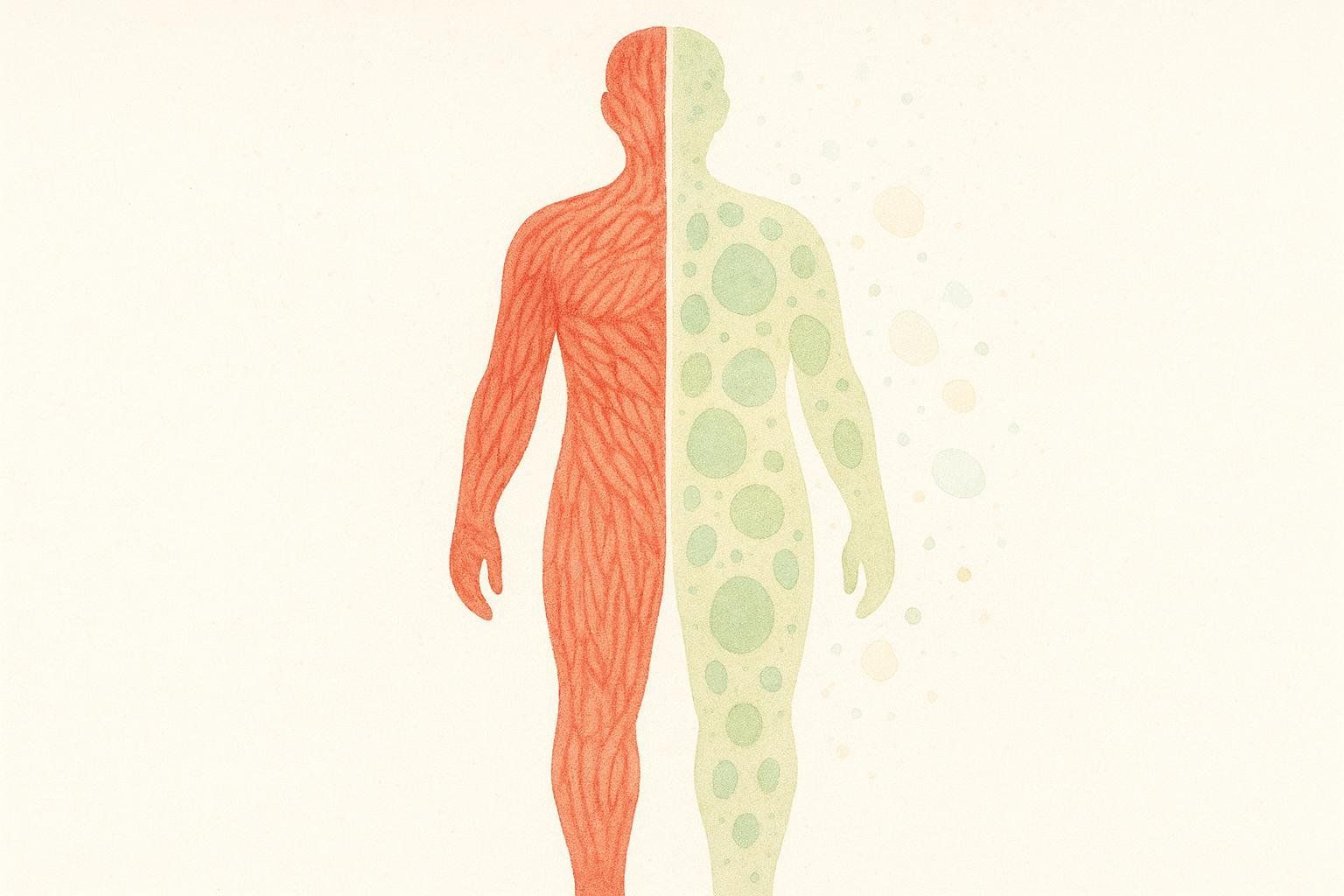
FAQs
Does incline walking burn more belly fat than flat walking?
Incline itself doesn’t spot-reduce belly fat, but the extra calorie expenditure helps you reach the caloric deficit required to lose overall body fat—including the visceral kind revealed on a DEXA scan.
I have mild knee osteoarthritis. What incline is safest?
Start at 1–2 % and keep speed moderate (about 2.8–3.2 mph). Progress only if completely pain-free—see our joint-support guide.
Can I combine incline walking with fasting cardio?
Yes. Early-morning fasted walks at 3–5 % incline are popular. Understand the pros and cons first in Fasted Cardio: Benefits & Risks.
How often should I do incline sessions?
Aim for 3–5 days per week, mixing lower- and higher-grade workouts. Total weekly duration (150–300 minutes of moderate activity) matters more than any single session.
Key Takeaways
- A good weight-loss incline sits between 1 % and 15 %, scaled to your fitness level.
- If you can maintain 30 minutes at an RPE 6–7 without joint pain, you’ve found your sweet spot.
- Steeper grades dramatically boost calorie burn—but only when paired with proper form and recovery.
- Verify progress with body-composition data, not just the bathroom scale, to confirm real fat loss.
Ready to put theory into practice? Book a BodySpec DEXA scan, lock in your incline plan, and watch the fat-loss numbers move in the right direction.
